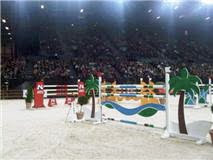In the art world, the topic of pricing is nearly taboo. One is not intended to question the "value" of an art object nor the rationale behind the asking price. Central to microeconomic theory, prices are viewed as an expression of one's willingness to pay for a specific good and the monetary value of that good (Hall, Lieberman 2003). Which begs the question: what factors justify the valuation?
Judith Benhamou-Huet (2001) describes those factors that she believes to be the most relevant in determining value. Firstly, the basic objective "quality" of the work is critiqued; line, colour, drawing, format, forms, thickness of paint and technique in general. These aspects are judged in comparison to established industry standards and will ultimately determine the overall quality of the object. This type of evaluation is the only form of objectivity one can adopt; all other factors involved are based on subjective reasoning.
The identity of the artist, his/her reputation and the historical value of the artwork have a substantial effect on valuation and the commercial appeal of each object; "It is the artist's entourage that establishes his reputation" (Benhamou-Huet, 2001:15).
The author illustrates this claim by pointing to artists such as Michelangelo, whose lasting notoriety is, in very large part, a consequence of the prolific writings of contemporaries Vasari and Pope Julius II, who created a mythology behind the artist and placed his art in an historically significant framework.
She extends this theory to the public appetite for artists as myths: "An artist's work is interpreted through the prism of the myth associated with his life. (...) Artists are allowed the freedom to fail (...) all that is asked of them is that they embody a myth. (...) The painting becomes not only a sign of the artist's redemptive suffering, but also, to a certain extent, a relic of that suffering." (Benhamou-Huet, 2001:93). By obtaining art objects, the public are able to own an original piece of the artistic genius that overcame adversity and torment. Van Gogh is the perfect example of the isolation and suffering necessary to create such deeply moving masterpieces.
In 1956, Andy Warhol said: "If you want to know all about Andy Warhol, just look at the surfaces of my paintings and films and me, and there i am. There's nothing behind it".
Olav Velthuis (2004) describes the hidden language of the pricing system. He dismantles the meaning evoked through prices, in addition to relative pricing practises and finally price shifts. He takes into account the social status of dealers and the use of pricing as a means of signaling to the market. Members of the art world are highly knowledgeable of pricing norms and therefore interpret and draw meaning from any observable shifts. Furthermore, he highlights the importance of social context and surroundings (identity of the producer, consumer, distributor): "Prices (...) serve as status symbols for these actors; and enable these actors to enact their role in the market" (Velthuis, 2004:191).
An interesting perception was that prices are never decreased (Velthuis 2004), contradicting the law of price elasticity in economic theory; the proportionate change of either supply or demand in response to a change in the other (Hall, Lieberman 2003). "These forces do not influence the aesthetic or cultural valuation of art because the price and value inhabit independent spheres" (Velthuis, 2004:182). The theory is that dealers consider price drops as unproductive in the market as they convey suspicion to collectors, therefore tend to drop the artist rather than the price.
In an attempt to rationalize the irrational, an artist's work is expressed in monetary terms. The irony being that the intrinsic value of art is unquantifiable; the effect on each individual is entirely emotional and therefore cannot be measured. However, in comparison to other works, the value of a piece does reflect "the identification and identity of the artist, the format and period of the work, and its degree of rarity and state of conservation" (Benhamou-Huet, 2001:17).




































No comments:
Post a Comment